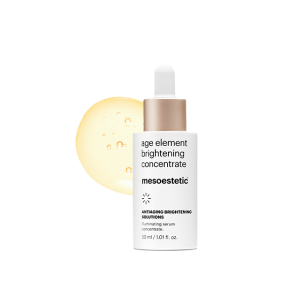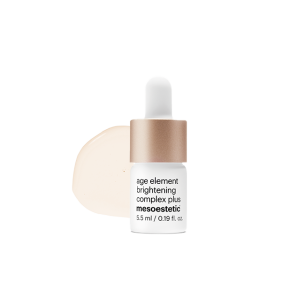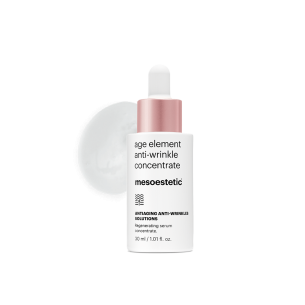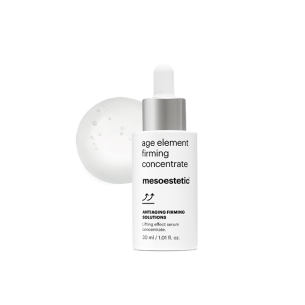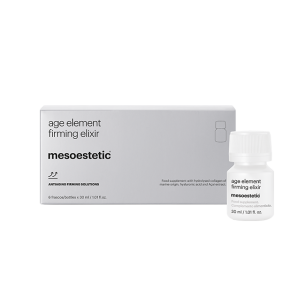Anti-wrinkle creams: what they are, what they are used for and when we should use them.
Wrinkles are both evidence of our personal baggage and a symptom of undesirable dermal aging, which we can put a stop to by using appropriate anti-wrinkle creams.

As with any medical or aesthetic product, we must seek advice before starting to use it. In this post you'll find out what anti-wrinkle creams are, their effects and the ideal time to start using them, and we'll also present some of our specific solutions.
What are anti-wrinkle creams?
In the field of skin aesthetics, anti-wrinkle creams are formulas that reduce the static and dynamic lines that appear as a result of skin aging, whether they appear on their own or as part of broader treatments.
Evidently, the passage of time (known as intrinsic aging or chronoaging) is part of nature. However, the so-called “biological skin aging” is a sum of genetic and epigenetic factors (extrinsic, both environmental and behavioural) that can be stopped.
The most evident manifestation of this type of skin aging is, of course, wrinkles. But there are also others, such as:
- Loss of luminosity
- Loss of firmness
- Appearance of wrinkles
- Loss of density
These effects appear progressively throughout life, and we can act directly on each of them if we use the dermatological solution with the appropriate specific functions. Or we can address them all at once by undergoing a comprehensive and personalised antiaging treatment provided by professionals.
What does an antiaging cream do?
As we already mentioned, a good anti-wrinkle cream will feature a composition geared towards combating one or more of these effects.
- Loss of luminosity is the earliest phenomenon associated with skin aging. With the decline of amino acids and proteins and transepidermal water loss, the skin becomes dull. In these cases curbing the release of free radicals through antioxidants is paramount.
- Flaccidity is the huge red flag that gets us to start taking care of our skin: the fibroblasts capacity to synthesise declines and collagen and elastin levels drop. We need phytoactive tightening ingredients to restructure the elements that make up the dermis, such as peptides.
- The dermal metabolism and cell renewal slow down, and wrinkles are no longer expression lines... We have to retexturise the skin,
When should we start using an anti-wrinkle cream?
Again, the time to start using anti-wrinkle creams will depend on the stage of skin aging. Therefore, there's no universal rule, as proven by our daily experience; a thirty-year-old person may already have crow's feet, while a fifty-year-old still has a smooth and bright skin.
Evidence shows us that, in general terms, there's a sequence in the appearance of the various degrees of skin aging. In this sequence the skin's loss of luminosity usually precedes the loss of firmness, which in turn precedes the appearance of deep wrinkles and the loss of dermal density.
However, a large part of these symptoms are progressive; that is, they faintly appear in the early stages and worsen over time. For instance, the definition of the facial oval: it's less noticeable in one's thirties than sixties, but the signs of mechanical fatigue, loss of volume and reduction of elasticity will already become evident.
mesoestetic® solutions for each stage of the skin's life
For all the above reasons, when it comes to presenting specific solutions, we continue considering the segmentation of skin aging in degrees. It is the most effective way of designing truly effective formulas that combat wrinkles at every stage of their evolution.
- Against the loss of luminosity, the range of antiaging brightening solutions smoothens imperfections and unifies the tone, providing a brighter skin thanks to the quick absorbing formulas with hyaluronic acid and vitamin C. These formulas can be either of general application, such as age element® brightening cream, or of specific application, such as age element® brightening eye contour.
- When treating loss of firmness, the most suitable option is the range of antiaging firming solutions. Our aim is to reinforce structures and promote elasticity by means of phytoactive tightening ingredients. Therefore, age element® firming eye contour treats drooping eyelids, whereas age element® firming cream smoothens the facial oval.
- Neutralising the depth of wrinkles and loss of dermal volume are the priority objective of the range of antiaging anti-wrinkles solutions, with biopeptides as the main active ingredients. This can be achieved by combining age element® anti-wrinkle cream during the day with age element® anti-wrinkle night cream at night and by attenuating bags in the eye contour area with age element® anti-wrinkle eye contour.
Young skin is healthy skin
For advice on the most suitable treatments and products for you, you can go to your closest mesoestetic® centre.
locate your reference centre
Where can I obtain information or undergo the treatment?









